Gambling sites have different casino games that play online choices for every player’s need. The range can be from the classic games to the ones that you have never seen in your life, from the best online gambling games list with low bets to games that require a bigger investment and sometimes it is more difficult to make choice than actually win. We have given you a heads up about the number of best gambling games online and now you will be introduced to the most popular games or their groups that online casinos provide. Enjoy our best casino rating for the best casino experience.
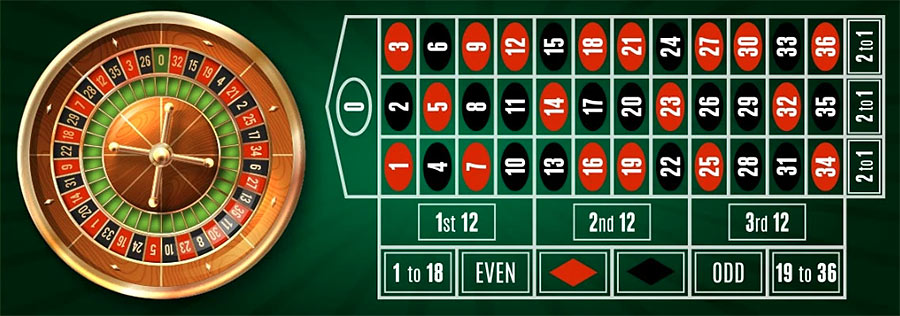
In roulette, players make attempts to guess where the ball will land on a spinning wheel. A ball is spun in one direction around the inside of a bowl enveloping the tilted track of a wheel (while the wheel is spinning in the opposite direction) which allows it to slowly lose momentum — and the ball will eventually land on one of the 37 divisions once both wheel and ball stop spinning.
The divisions around the wheel are randomly numbered from 0 to 36 for the traditional French/European style, whereas the American style roulette features double 0s while the “Sands Roulette” features triple 0s. Each division also alternates in colour from red to black and the 0 sections are coloured green.
Prior to the croupier rolling the ball, players will place bets on a betting mat with a variety of options for where the ball will land. The options range from single number bets to various groupings of numbers to the colours (red, black, or green) to even/odd bets to low (1 to 18) or high (19 to 36) numbers.
With this many betting options, it can certainly be a daunting experience for beginners of roulette. But not to worry, that’s why we’re here!
Roulette Bet Types
Indeed, much of the excitement in roulette stems from the massive number of different bets that can be made and their associated odds. And while there are plenty of variations of roulette, the basic bets remain standard across the board for all modern forms of this game.
Here is a list of available bets in roulette and their associated payouts:
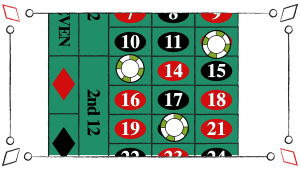
The Straight Up (En Plein): You may place a wager on one or more numbers by placing your chips on the box showing the number(s) on the table. Zero (0) bets are also allowed here. This bet pays at a rate of 35 to 1 if the ball lands on one of the chosen numbers.

The Split Bet (En Chaval): With this bet, you may place your stake across the line dividing two numbers. If the ball happens to land on either one of the numbers, you’ll get a payout of 17 to 1.

The Street Bet (Carre Simple/Transversale): If you want to place this bet, simply put your chip(s) on the outside border of a row of three numbers. This bet will reward you with a payout of 11 to 1.
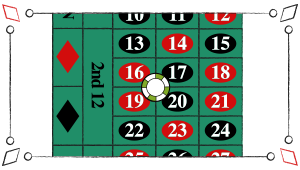
The Corner Bet (Carre): This bet can be staked when you place your stake on the intersection of a square where four numbers meet. Upon landing on any one of the four numbers, you’ll get a winning bet that pays 8 to 1.
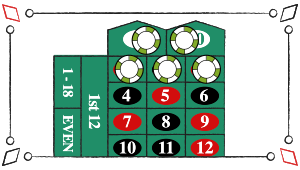
The Five Bet: This particular bet only applies to the American double-zero format. The bet revolves around five numbers (0, 00, 1, 2, and 3) and a winning wager is paid at 6 to 1.
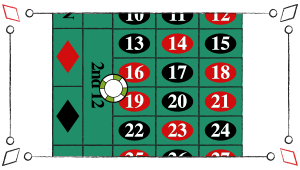
The Line Bet (Sixain): For this bet, place the stake on the outside borders (on the intersection of the edge of two rows of three numbers) of the six numbers you wish to bet on. Winning this bet will afford you a reward of 5 to 1.
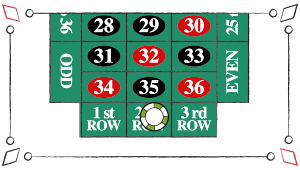
The Column Bet (Colonne): This bet allows you to place a wager on one of the three columns available on the table, each column comprising of 12 numbers. Simply place your chip on one of the squares at the bottom of the column to make the bet. A winning Column bet is paid 2 to 1.
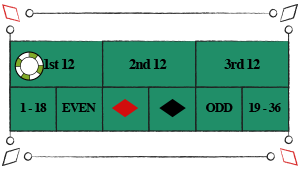
The Dozens Bet (Douzaine): Similarly paying out 2 to 1, this bet is divided into three categories: the first dozen (1 – 12), the second dozen (13 – 24), and the third dozen (25 – 36). You may bet on up to two categories of this bet but in the event that the ball lands on 0 or 00, you lose.
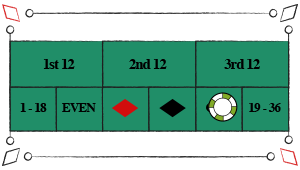
The Odd/Even Bet (Impair et Pair): This bet is as straightforward as they come. You place a wager on either the Odd or Even section on the roulette table and there are 18 odd and even numbers each to bet on. However, neither the 0 nor 00 will count as an even bet and the house wins if either one hits. This bet pays 1 to 1.
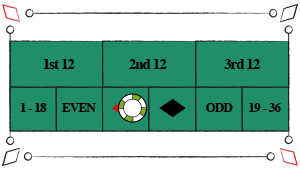
The Red/Black Bet (Rouge et Noir): This is another even-money bet in which you will have to pick either red or black that the ball will land on.
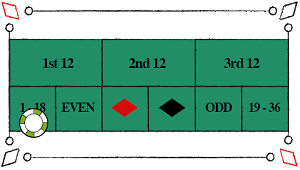
The High/Low Bet (Passe et Manque): This is also another bet which pays 1 to 1. You place a bet on a range of numbers (either on the 1 to 18 or 19 to 36 sections) on the table. Similarly, if the ball lands on either 0 or 00, you lose.
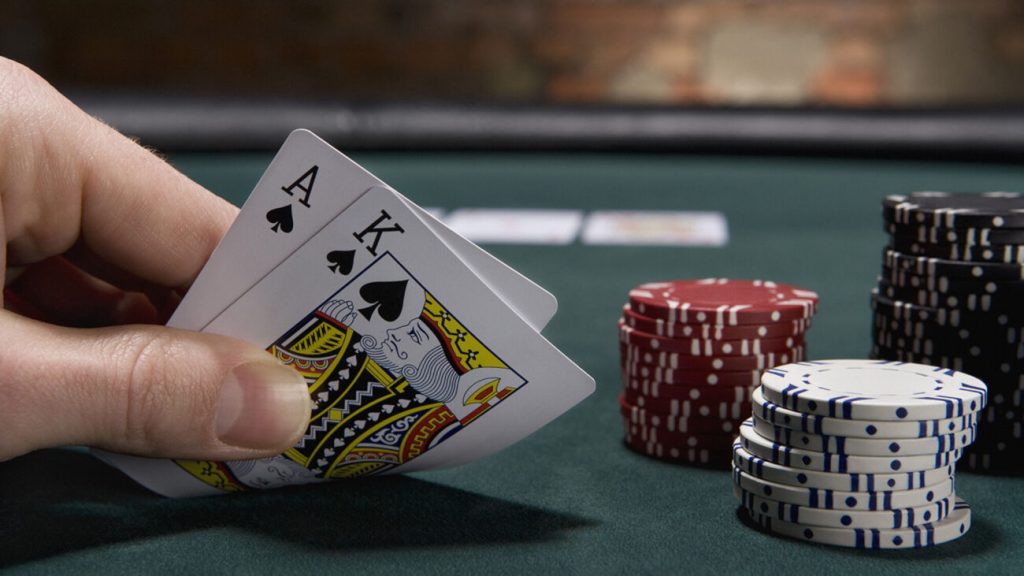
One of the more stripped-down variations of this card game offers a rather straightforward experience though there are opportunities for some exciting plays in the game — card counting, while discouraged, comes to mind.
In fact, some expert players are usually very gifted mathematically in that they are able to perfectly count the number of cards left in the deck perfectly, all inside their own heads.
However, it’s not an issue if you’re lacklustre in the mathematics department. Casual play is also pretty exciting on its own since the house odds in blackjack is one of the lowest in any casino, offline or online. This would make blackjack one of the most attractive games to play in many online casinos in Malaysia like Play88 or Mega888.
For this piece, we’ll focus mainly on the how-tos when it comes to playing a standard game of blackjack in a casino.
But first, you’ll need to register and create a Play88 account to start playing blackjack. Have you done so? Great! Let’s move on to the following section.
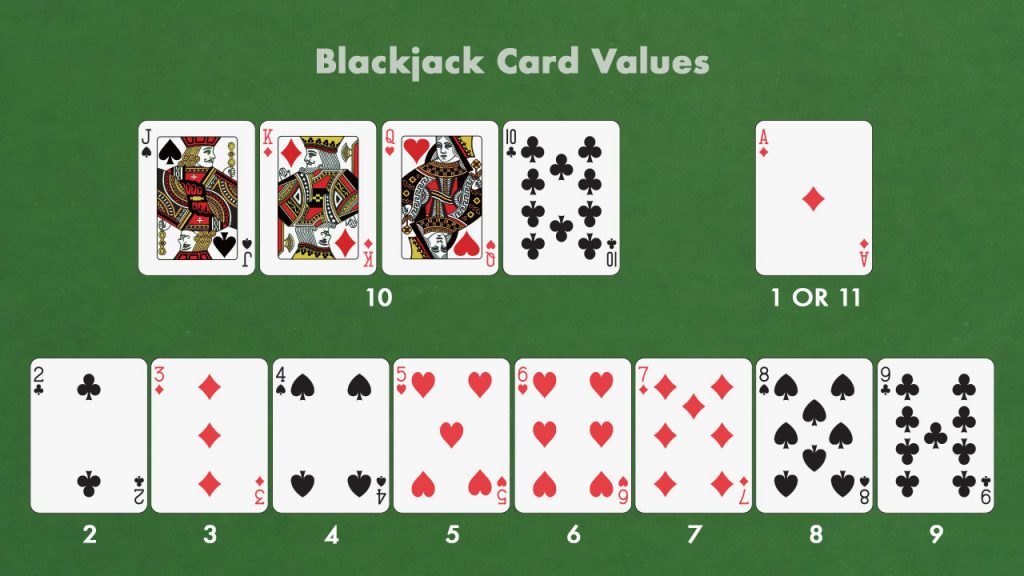
In blackjack, all you really need is a standard deck of 52 cards to start playing. That being said, most physical casinos will employ the use of several decks at the same time, with the six-deck format (312 cards) being the most common.
Of course, the above applies to most physical casinos but if you were to transform blackjack into digital form, the same format (52-card deck) would also be applied.
Here are the card values in blackjack:
Before you even fantasize about your potential windfall, you’ll first need capital to play. And most physical casinos will only accept chips that you can get by converting from cash at the blackjack table or at specific counters.
But if you’re playing in an online casino, you may instead opt for credits and/or using cash to play. Once you’re done setting up your capital, it’s time to play!
At the start of the round, the first thing that you should do (apart from observing how other players are betting and the state of the deck) is to place a bet. And once all bets have been placed, the dealer will begin to shuffle the deck and start to deal cards clockwise to each player with all cards facing up for every player except themselves. The dealer will have one card face up and another face down in front of them.
Now comes the exciting part and where your plays will ultimately decide your fate.
The dealer will begin with the leftmost person at the table and wait for the player to play their hand (we’ll get to the various plays involved in blackjack in a short while). To play your hand, add the card values of your initial two cards together and you’ll get a hand total between 4 and 21.
If you’re dealt a ten-value card and an ace, congrats! You’ve got a blackjack and have won the round — so long as the dealer doesn’t also have a blackjack. Getting a blackjack will entitle you to a payout of three to two times more than your initial wager. In the case that both you and the dealer have scored blackjacks, no one wins between both parties.
If you and the dealer do not have blackjacks, the round will begin as per usual and you will have to wait for your turn to play your hand.
When it finally comes to your turn, you’ll have to make your decision based on your strategy and by using specific hand signals (buttons in online casinos). In physical casinos, dealers will not respond to verbal instructions due to policies requiring the cameras to capture your instructions.
In this case, there are five ways to play your hand:
If you’re still in the game by the time everyone has played their hands, then it’s time for the dealer’s turn!
At this point, the dealer will flip over their facedown card and add up the two cards they have on their hand. Depending on their hand, the dealer may take a number of actions:
Doubling, splitting, or surrendering is not available to the dealer and they do not have much freedom to play their hand compared to the player. The dealer must play their hand the same way every time, for each round. And the only exception is when the dealer has a hand consisting of an ace and a 6. Here, the ace may be considered to be a one, giving the dealer more chances to deal a better hand than 17.
After all players and the dealer have completed their turn, one of three things may happen between yourself and the dealer:
Following the resolution of a round of blackjack, it’s time for the payout (if you win)!
Accordingly, the dealer will resolve all outstanding debts for the round after tallying up every player’s hands. One of three things will happen here:
Also, in cases where the dealer and you have the same hand, it’s considered a draw or push and you get to keep your initial bet.
Now the round is finally over. That’s really all there is to it. The cards are swept up and the dealer will then start another round following the similar steps as above.
Gambling sites have different casino games that play online choices for every player’s need. The range can be from the classic games to the ones that you have never seen in your life, from the best online gambling games list with low bets to games that require a bigger investment and sometimes it is more difficult to make choice than actually win. We have given you a heads up about the number of best gambling games online and now you will be introduced to the most popular games or their groups that online casinos provide. Enjoy our best casino rating for the best casino experience.

In roulette, players make attempts to guess where the ball will land on a spinning wheel. A ball is spun in one direction around the inside of a bowl enveloping the tilted track of a wheel (while the wheel is spinning in the opposite direction) which allows it to slowly lose momentum — and the ball will eventually land on one of the 37 divisions once both wheel and ball stop spinning.
The divisions around the wheel are randomly numbered from 0 to 36 for the traditional French/European style, whereas the American style roulette features double 0s while the “Sands Roulette” features triple 0s. Each division also alternates in colour from red to black and the 0 sections are coloured green.
Prior to the croupier rolling the ball, players will place bets on a betting mat with a variety of options for where the ball will land. The options range from single number bets to various groupings of numbers to the colours (red, black, or green) to even/odd bets to low (1 to 18) or high (19 to 36) numbers.
With this many betting options, it can certainly be a daunting experience for beginners of roulette. But not to worry, that’s why we’re here!
Roulette Bet Types
Indeed, much of the excitement in roulette stems from the massive number of different bets that can be made and their associated odds. And while there are plenty of variations of roulette, the basic bets remain standard across the board for all modern forms of this game.
Here is a list of available bets in roulette and their associated payouts:
The Straight Up (En Plein): You may place a wager on one or more numbers by placing your chips on the box showing the number(s) on the table. Zero (0) bets are also allowed here. This bet pays at a rate of 35 to 1 if the ball lands on one of the chosen numbers.
The Split Bet (En Chaval): With this bet, you may place your stake across the line dividing two numbers. If the ball happens to land on either one of the numbers, you’ll get a payout of 17 to 1.
The Street Bet (Carre Simple/Transversale): If you want to place this bet, simply put your chip(s) on the outside border of a row of three numbers. This bet will reward you with a payout of 11 to 1.
The Corner Bet (Carre): This bet can be staked when you place your stake on the intersection of a square where four numbers meet. Upon landing on any one of the four numbers, you’ll get a winning bet that pays 8 to 1.
The Five Bet: This particular bet only applies to the American double-zero format. The bet revolves around five numbers (0, 00, 1, 2, and 3) and a winning wager is paid at 6 to 1.
The Line Bet (Sixain): For this bet, place the stake on the outside borders (on the intersection of the edge of two rows of three numbers) of the six numbers you wish to bet on. Winning this bet will afford you a reward of 5 to 1.
The Column Bet (Colonne): This bet allows you to place a wager on one of the three columns available on the table, each column comprising of 12 numbers. Simply place your chip on one of the squares at the bottom of the column to make the bet. A winning Column bet is paid 2 to 1.
The Dozens Bet (Douzaine): Similarly paying out 2 to 1, this bet is divided into three categories: the first dozen (1 – 12), the second dozen (13 – 24), and the third dozen (25 – 36). You may bet on up to two categories of this bet but in the event that the ball lands on 0 or 00, you lose.
The Odd/Even Bet (Impair et Pair): This bet is as straightforward as they come. You place a wager on either the Odd or Even section on the roulette table and there are 18 odd and even numbers each to bet on. However, neither the 0 nor 00 will count as an even bet and the house wins if either one hits. This bet pays 1 to 1.
The Red/Black Bet (Rouge et Noir): This is another even-money bet in which you will have to pick either red or black that the ball will land on.
The High/Low Bet (Passe et Manque): This is also another bet which pays 1 to 1. You place a bet on a range of numbers (either on the 1 to 18 or 19 to 36 sections) on the table. Similarly, if the ball lands on either 0 or 00, you lose.
One of the more stripped-down variations of this card game offers a rather straightforward experience though there are opportunities for some exciting plays in the game — card counting, while discouraged, comes to mind.
In fact, some expert players are usually very gifted mathematically in that they are able to perfectly count the number of cards left in the deck perfectly, all inside their own heads.
However, it’s not an issue if you’re lacklustre in the mathematics department. Casual play is also pretty exciting on its own since the house odds in blackjack is one of the lowest in any casino, offline or online. This would make blackjack one of the most attractive games to play in many online casinos in Malaysia like Play88 or Mega888.
For this piece, we’ll focus mainly on the how-tos when it comes to playing a standard game of blackjack in a casino.
But first, you’ll need to register and create a Play88 account to start playing blackjack. Have you done so? Great! Let’s move on to the following section.
In blackjack, all you really need is a standard deck of 52 cards to start playing. That being said, most physical casinos will employ the use of several decks at the same time, with the six-deck format (312 cards) being the most common.
Of course, the above applies to most physical casinos but if you were to transform blackjack into digital form, the same format (52-card deck) would also be applied.
Here are the card values in blackjack:
Before you even fantasize about your potential windfall, you’ll first need capital to play. And most physical casinos will only accept chips that you can get by converting from cash at the blackjack table or at specific counters.
But if you’re playing in an online casino, you may instead opt for credits and/or using cash to play. Once you’re done setting up your capital, it’s time to play!
At the start of the round, the first thing that you should do (apart from observing how other players are betting and the state of the deck) is to place a bet. And once all bets have been placed, the dealer will begin to shuffle the deck and start to deal cards clockwise to each player with all cards facing up for every player except themselves. The dealer will have one card face up and another face down in front of them.
Now comes the exciting part and where your plays will ultimately decide your fate.
The dealer will begin with the leftmost person at the table and wait for the player to play their hand (we’ll get to the various plays involved in blackjack in a short while). To play your hand, add the card values of your initial two cards together and you’ll get a hand total between 4 and 21.
If you’re dealt a ten-value card and an ace, congrats! You’ve got a blackjack and have won the round — so long as the dealer doesn’t also have a blackjack. Getting a blackjack will entitle you to a payout of three to two times more than your initial wager. In the case that both you and the dealer have scored blackjacks, no one wins between both parties.
If you and the dealer do not have blackjacks, the round will begin as per usual and you will have to wait for your turn to play your hand.
When it finally comes to your turn, you’ll have to make your decision based on your strategy and by using specific hand signals (buttons in online casinos). In physical casinos, dealers will not respond to verbal instructions due to policies requiring the cameras to capture your instructions.
In this case, there are five ways to play your hand:
If you’re still in the game by the time everyone has played their hands, then it’s time for the dealer’s turn!
At this point, the dealer will flip over their facedown card and add up the two cards they have on their hand. Depending on their hand, the dealer may take a number of actions:
Doubling, splitting, or surrendering is not available to the dealer and they do not have much freedom to play their hand compared to the player. The dealer must play their hand the same way every time, for each round. And the only exception is when the dealer has a hand consisting of an ace and a 6. Here, the ace may be considered to be a one, giving the dealer more chances to deal a better hand than 17.
After all players and the dealer have completed their turn, one of three things may happen between yourself and the dealer:
Following the resolution of a round of blackjack, it’s time for the payout (if you win)!
Accordingly, the dealer will resolve all outstanding debts for the round after tallying up every player’s hands. One of three things will happen here:
Also, in cases where the dealer and you have the same hand, it’s considered a draw or push and you get to keep your initial bet.
Now the round is finally over. That’s really all there is to it. The cards are swept up and the dealer will then start another round following the similar steps as above.